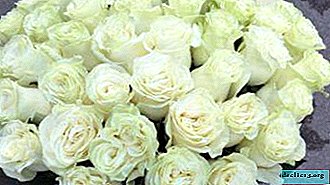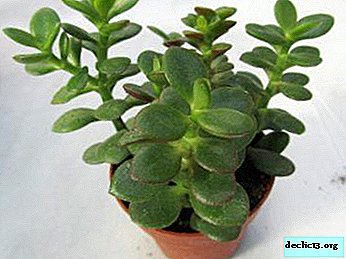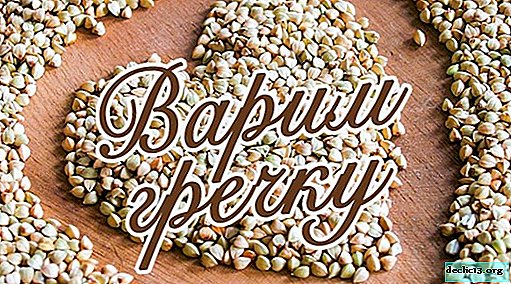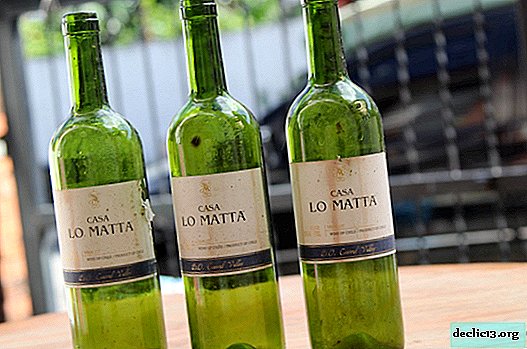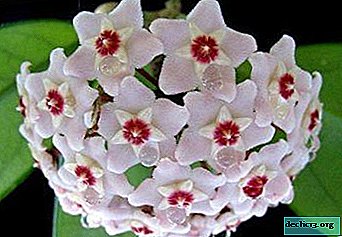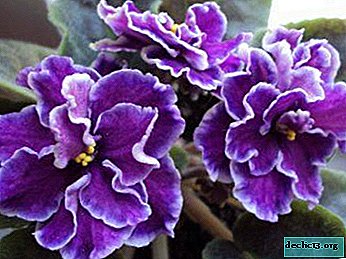Characteristics, photos and features of growing Zarya radish

Radish of the early variety "Dawn" has long been a favorite among many gardeners. If you are thinking about planting this root crop in your garden, you first need to learn about its features.
In the article you will find detailed information about the origin of the Zarya radish, its advantages and disadvantages, as well as important details about the sowing, care and storage of the crop.
Why did he become so popular and what are its advantages? Read more about this in this material.
Description of appearance and photo
The ripened radish is a fruit of a round or slightly oval shape from scarlet to dark red, an average of 3-4 cm long and about 3 cm in diameter, which gives the radish a slightly flattened shape on both sides. The mass of the fruit depends on the growing conditions: from 18 to 24 grams in open ground and from 5 to 8 grams in sheltered.
Here you can see how the culture looks in the photo:



Sowing time and yield
As noted earlier, the variety "Dawn" is early. Planting it is recommended in the time interval from early April to mid-August, at an air temperature of at least 16 ° C, deepening the seeds into the soil by 2 cm. The first sprouts germinate already for 4-5 days.
Important! Radishes prefer plentiful watering, but if you do not want to get watery, tasteless fruits, do not over-fill the beds with water.Productivity differs depending on growing conditions and averages from 1.5 to 3 kg per square meter (15-30 tons per 1 hectare).
Growing conditions and ripening period
The unpretentiousness of this variety allows you to grow it with approximately the same yield both in open ground and in protected. It is advisable to do this in a well-lit place, on a sunny bed, which rarely gets shadow from other plants or on a windowsill, near a window on the sunny side of the house. With regular watering and favorable air temperature, ripening period is 27-35 days.
To harvest for a long time, gardeners sow radishes several times a season with an interval of 15-20 days.
If you want to accelerate the growth and maturation process of the root crop, as well as the amount of yield, plant the seeds in the greenhouse. So, you can wait for the first fruits in 20-24 days.
The soil
 Soil is an important criterion for planting and further care of the plant, which subsequently affects the quality and volume of the crop. Radish prefers moist, loose soil saturated with potassium. When choosing a soil and site, it is necessary to take into account a number of factors:
Soil is an important criterion for planting and further care of the plant, which subsequently affects the quality and volume of the crop. Radish prefers moist, loose soil saturated with potassium. When choosing a soil and site, it is necessary to take into account a number of factors:
- Preparedness for sowing.
- Fertility.
- Acidity.
- What cultures were the forerunners.
The best option for sowing radish is considered loamy or sandy loam soil of neutral acidity. If your suburban area is acidic, you need to lime it, and it is better to dilute heavy clay soil with sand.
Attention! Do not plant radishes in places where cruciferous plants such as cabbage and horseradish used to grow. These plants absorb from the soil exactly those useful trace elements that are necessary for radishes, as a result of which you will encounter low productivity or will be forced to additionally feed the plants.Resistance to diseases and pests
Variety "Dawn" is considered relatively resistant to the most common diseases among root crops. However, in case of adverse climatic conditions, it still needs additional care.
As a top dressing root vegetables are most often used:
- Double superphosphate.
- Urea
- Wood ash.
- Humus / compost.
It is important to note that the variety is resistant to flowering. Even despite flowering, the fruits retain all their positive properties.
Storage
If you plan to preserve the radish until the first half of autumn, it is better to start sowing as late as possible, approximately in early August.
Like any root vegetable, this variety of radish should not be stored frozen. So they lose their dense structure and taste.
Fruits are best preserved in the garden, so feel free to leave the radishes in the ground to a temperature of -5 ° C. After collecting such a crop, you can keep it fresh for up to 4 weeks in the refrigerator and up to 2 months in the cellar.
Breeding History
Zarya was bred in the late 1960s by breeders from the All-Russian Research Institute of Vegetable Production and has been approved for use throughout the Russian Federation since 1971. Its Latin name is RAPHANUS SATIVUS VAR. RADICULA "ZARYA".
Advantages and disadvantages of the variety
 Variety "Dawn" has a number of positive characteristics that distinguish it from the rest of the varieties:
Variety "Dawn" has a number of positive characteristics that distinguish it from the rest of the varieties:
- rich taste;
- high productivity;
- nice shape and size;
- widespread prevalence and availability of seeds.
It is not surprising that this gardener was so fond of many gardeners. It is quite unpretentious, it can be planted for almost the entire summer season, it is resistant to disease and pleases with a plentiful and tasty crop, without causing unnecessary trouble.
Varieties "Dawn" is almost impossible to find flaws, perhaps a small fruit size. But with its high productivity, this hardly matters.
Application
Fresh radish ─ a storehouse of vitamins and minerals that a person needs in the spring period of vitamin deficiency. Variety "Dawn" is not only healthy, but also delicious. It has a pleasant crunchy texture, juicy pulp and a slightly spicy rich taste. This radish, supplemented with cucumbers, tomatoes and other fresh vegetables from your garden, is perfect for summer vitamin salads.
Cultivation Features
Growing
So, If you decide to grow Zarya radish, you need to:
- Choose a plot of land that is well lit by the sun.
- Determine the level of soil acidity (optimal - moderate acidity) and prepare it for sowing.
- When sowing, deepen the seeds in the ground by 2-3 centimeters.
- Provide root crops with regular plentiful watering.
- Feed the plant in case of adverse climate or for additional protection against disease.
Harvesting and storage
It is possible to collect the Zarya variety already on the 27-30th day after sowing. To keep the fruits fresh for a long time, 2-3 days before harvesting, pour plenty of water in the garden so that the root crop is saturated with moisture. If you plan to eat radishes in a short time, it is better to do this in the first 1-2 weeks, keeping the crop in the refrigerator.
If you want to extend the shelf life of the root crop, the Zarya variety is perfectly stored in the cellar for several months. For the best effect, the root crop can be cleaned of tops and placed in jars of water tightly closed with a lid.Diseases and Pests
 Despite the fact that Zarya radish is relatively resistant to various diseasesThere is a danger of attacking the tops and fruits of pests. For example, cruciferous fleas and whites. A solution of laundry soap, which needs to process the leaves, as well as wood ash scattered on the ground along the beds, will help get rid of the first.
Despite the fact that Zarya radish is relatively resistant to various diseasesThere is a danger of attacking the tops and fruits of pests. For example, cruciferous fleas and whites. A solution of laundry soap, which needs to process the leaves, as well as wood ash scattered on the ground along the beds, will help get rid of the first.
In the second case, a solution prepared from simple ingredients will save your crop: 5 g of black ground pepper, 25 g of dry mustard and 60 g of salt per bucket of water.
Similar varieties
- "Quart". It is also a fairly early variety that ripens in the open field in 27-35 days. White rot and black leg are resistant to disease. It has a mild flavor and juicy flesh, however, in size exceeds the "Dawn" by 2-3 centimeters.
- "Ilka". Resistant to pests, ripened fruits have a pleasant taste. This variety is mid-season, with a ripening period of 25-30 days.
- "Rudolf". It is similar to the variety "Dawn" for its unpretentiousness in leaving and early maturing. "Rudolph" is also popular among gardeners due to its pleasant taste without bitterness.
- Wurzburg 59. Another unpretentious variety of radish, similar to "Dawn" for its resistance to various diseases and pests. Its fruits have a beautiful round shape and a bright pink color.
- The Red Giant. The growth process of radishes of this variety is approximately 1 month. Taste, shape and color of the fruit are similar to the variety "Dawn." However, the Red Giant radish is much larger, the mass of one fruit can reach 140 grams.
No wonder radish varieties "Dawn" are so fond of gardeners. He not only has a pleasant taste, but also quite unpretentious in care. He is not particularly afraid of diseases and pests common among root crops. With proper care, you will get a rich harvest of radishes. Now, armed with practical tips from the article, boldly plant the Zarya radish and enjoy the taste of its healthy fruits!





